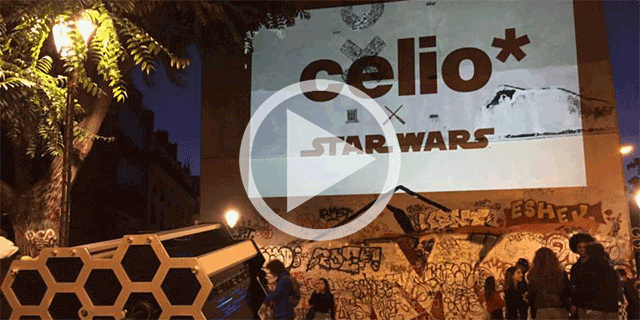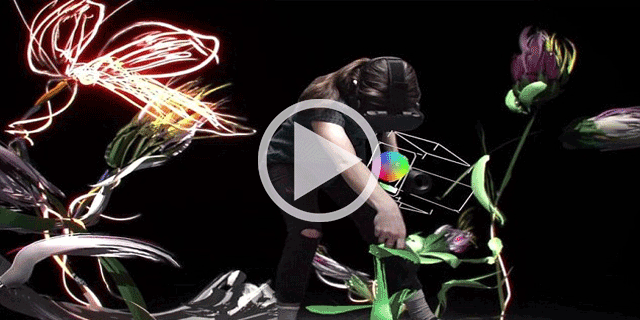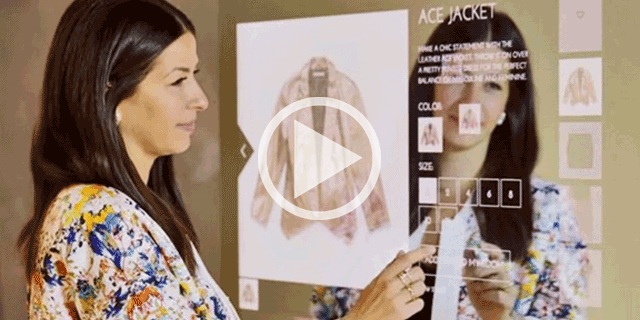10 COOLEST EXPERIENTIAL MARKETING TECHNOLOGIES
The premise of an experiential campaign is to create a closer bond between the consumer and the brand by immersing them in a fun and memorable experience.
If a brand event stirs genuine positive emotions within people then they are more likely to associate those emotions with that brand, which is more effective than just showing the consumer an ad.
Check out our Top 10 Technologies to use in your next experiential campaign:
1. iProjector
This portable technology has been used to dress buildings with light, animate rooms, project movies at exhibitions, launch new products and promote large events in such a way that has had crowds talking all over the world, for brands like Budweiser, Twin Atlantic and Ken Loach’s latest masterpiece “I, Daniel Blake”.
The iProjector is designed to hijack crowds and capture attention on the move with super-bright projections that maintain HD movie quality with up to 200 ft images
The unique technology is ideal for guerrilla advertising, product launches or advertising trailers.
2. Virtual Reality: HTC Vive
This headset is designed to utilize "room scale" technology and turn a room into 3D space via sensors, with the virtual world. Allowing the user to navigate naturally, with the ability to walk around and use motion tracked handheld controllers to vividly manipulate objects, interact with precision, communicate and experience immersive environments.
At Kommando we have used this technology to create an immersive experience for our client VELUX.
3. Google Tilt Brush
When talking about virtual reality experiences, the first thing that comes to mind is immersing yourself in a video game or 3D cinema experience.
However, Google Tilt Brush HTC headset and set of hand controllers is a transformative virtual reality experience where consumers are able to paint virtual worlds of their own. Users have the choice of different colours, tools and materials such as fire, snow and stars to create 3D life size paintings.
The appeal for virtual reality has reached way beyond the gamer market, for example artists and fashion designers are embracing the phenomenon, using the room as their canvas and sketching out ideas using cotton, leather, silk and denim.
4. GOOGLE DAYDREAM
Daydream, is a software platform for virtual reality, a common ground for app developers and Google’s hardware partners. It’s a successor to Google’s debut VR Google Cardboard, but far more holistic in scope — Cardboard supports both iOS and Android devices, primarily delivers low-resolution apps and videos, and is largely intended for use with an inexpensive plastic or cardboard headset. Daydream, by contrast, is targeting the enthusiast market.
Daydream consists of three components: a headset, a controller, and software like apps and games.
Instead of hard plastic like most other VR headsets, Daydream is covered in cloth and will be available in three colours: Snow, Slate and Crimson, though the latter two options won't be available at launch. Why not read about our thoughts on Google's DayDream!
5. AR
Augmented Reality (AR) has emerged as an innovative tool that allows brands to interact with consumers in ways that they never could achieve before through mediums such as print advertising. AR can create new digital experiences that enrich the relationship between a consumer and a brand - at any location.
Check out how we used AR, to show the dangers of Second Hand Smoke, for a Scottish Government initiative.
6. IWalker
The iWalker® is the world’s most advanced wearable digital media system, designed with the primary function of reaching and connecting content with people, their mobiles and social media.
Static formats provide visual only stimulation and at times this is lost in the hustle. However, with iWalker® it provides the only roaming experiential digital signage solution that humanises the Out Of Home media experience.
We understand NomadiX Media have some exciting news coming in 2017, follow them on social media for more information.
7. PixAngels
All campaigns want their message to be at the forefront of the market with the latest gadgets to get great results for clients.
If you’ve used photo booths before - you will know they come with their limitations. The main difference here is that as well as the fun interaction of a photo booth, this tech drives tangible returns. Clients are getting ROI through data capture, increased web traffic and amplified brand reach.
Along with a team of trained and briefed ambassadors, PixAngels unique tech creates fluid and interactive experiences at events, where every aspect is totally customisable and brand-able unlike a static photo booth.
8. Artificial Intelligence (AI)
Artificial intelligence, specifically machine learning, is an increasingly integral part of many industries, including marketing. We recently wrote a blog on the Future of Retail: Artificial Intelligence and Virtual Reality Have Big Roles To Play.
Retailers have already started to integrate this tech into their stores and it is already yielding results! Fashion retailer Rebecca Minkoff have seen an increase in their sales with smart mirrors in dressing rooms.
9. Facial detection emotions – Emotibox
Advanced facial detection software embedded within the Emotibox counts the number of people in a designated area, and profiles the audience into age and gender brackets. Not only is the Emotibox capable of counting and profiling an audience, it can also identify different facial expressions, mapping smiles and other features including puzzlement and disappointment. It is then possible to activate specific digital content based on the prevailing audience demographic/emotion at any one time.
With the Emotibox, we can now accurately map the emotional impact of consumer engagement and identify staff training needs in real time, giving clients immediate access to data which can influence the remainder of a campaign roll-out.
10. Mapping
Projection mapping, is a technology used to turn objects, often irregularly shaped, into a display surface for video projection. These objects may be complex industrial landscapes, such as buildings, small indoor objects or theatrical stages.
By using specialized software, a two or three-dimensional object is spatially mapped on the virtual program which mimics the real environment it is to be projected on. The software can interact with a projector to fit any desired image onto the surface of that object. This can add extra dimensions, optical illusions, and notions of movement onto previously static objects. The video is commonly combined with, or triggered by, audio to create an audio-visual narrative.
We love all of the above technologies, and try to integrate them into each of our campaigns where possible, in order to create an immersive experience for the consumer.
If you are interested in any of the above technologies for an experiential campaign, we would love to hear from you.
Future of Retail: AI & VR
Technology is rewriting the marketing playbook









